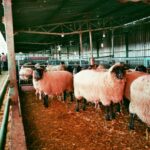Securing an agricultural loan is often necessary for South African farmers looking to expand their operations, purchase equipment, or manage seasonal expenses. However, many farmers struggle with the loan application process, leading to delays or rejections. This article highlights 10 common mistakes farmers make when applying for agricultural loans and provides tips on how to avoid them.
1. Lack of a Comprehensive Business Plan
One of the most common reasons for loan rejection is failing to present a detailed business plan. Banks and lenders need to understand how you plan to use the funds and generate returns.
- Solution: Prepare a business plan that outlines your farming goals, projected income, expenses, and repayment strategy. Include details about market trends, risks, and your mitigation strategies.
2. Incomplete or Inaccurate Documentation
Submitting incomplete or incorrect documentation can cause delays or result in outright rejection of your application.
- Solution: Create a checklist of all required documents, such as your ID, proof of farm ownership or lease, bank statements, and tax compliance certificates. Double-check for accuracy before submission.
3. Overestimating Financial Needs
Requesting more money than you need can raise red flags for lenders, as it suggests poor planning or potential misuse of funds.
- Solution: Calculate the exact amount required for your project and justify it with a detailed budget. Break down costs for equipment, seeds, labor, and other expenses.
4. Ignoring Credit Score and History
Your credit score plays a significant role in determining whether your loan application will be approved. A poor credit history or outstanding debts can work against you.
- Solution: Check your credit report before applying. Clear outstanding debts and work to improve your credit score by paying bills on time.
5. Applying for the Wrong Type of Loan
Not all agricultural loans are the same. Some are designed for equipment purchase, while others cater to operational costs or land acquisition.
- Solution: Research loan options and choose one that matches your specific needs. Consult with lenders or agricultural finance advisors for guidance.
6. Failure to Demonstrate Repayment Ability
Lenders need assurance that you can repay the loan on time. If you fail to demonstrate this, your application is likely to be rejected.
- Solution: Provide clear evidence of your income streams and past financial performance. Use cash flow projections to show how you will manage repayments.
7. Neglecting Risk Management Plans
Farming is inherently risky due to factors like droughts, pests, and market fluctuations. Lenders want to see that you have a plan to manage these risks.
- Solution: Include risk mitigation strategies in your business plan, such as crop insurance, diversification, or irrigation systems to handle droughts.
8. Overlooking Government Support Programs
Many South African farmers are unaware of government-backed agricultural finance programs that could improve their loan prospects.
- Solution: Research initiatives like the Comprehensive Agricultural Support Programme (CASP) or AgriBEE funding. These programs can provide guarantees or additional support to strengthen your application.
9. Not Building a Relationship with Lenders
Walking into a bank or lender without prior interaction can weaken your chances of securing a loan.
- Solution: Build relationships with local banks or financial institutions. Attend agricultural finance workshops or seek advice from loan officers before applying.
10. Rushing the Application Process
Submitting a hastily prepared application increases the likelihood of errors, omissions, and rejection.
- Solution: Take your time to prepare and review your application. Seek assistance from agricultural advisors or financial consultants if needed.
Applying for an agricultural loan can be a complex process, but avoiding these common mistakes increases your chances of approval. Start by organizing your finances, understanding your needs, and presenting a clear plan to lenders. By doing so, you can secure the funding necessary to grow your farming operation sustainably and profitably.
Join 'Farmers Mag' WhatsApp Channel
Get the latest Farming news and tips delivered straight to your WhatsApp
CLICK HERE TO JOIN






